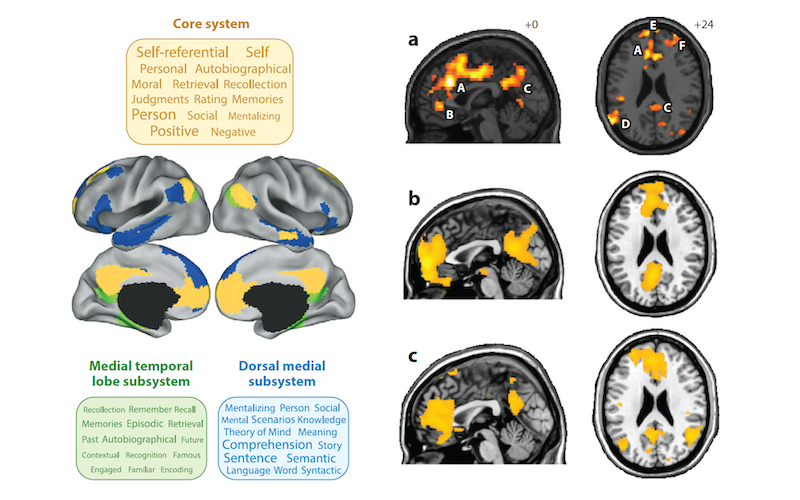
DEFAULT MODE NETWORK
‘Whilst part of what we perceive comes through our senses from the object before us, another part (and it may be the larger part) always comes out of our own head’.
This quote from the American psychologist and philosopher William James (1890) expresses our current understanding of the brain and consciousness. The modes of perception that William James identified in the above quote are analogous to the neurobiological notions of reflexive and intrinsic perception.
Until quite recently, brain science has been dominated by the idea that perception and brain function are reflexive. This has been reinforced by research methodologies that focus on responses that are evoked by specific tasks. This approach has been remarkably productive, however it neglects the possibility that brain function is largely intrinsic. Intrinsic functions relate to the integration of information arising from the organism.
It has been argued that, intrinsic processes form the ambient neurobiological ground from which perception, cognition and behaviour arise. Marcus Raichle, a leading proponent of the intrinsic view of the brain refers to intrinsic activity as the ‘dark energy’ of the brain.
What the brain does at rest is vitally important to brain function. The resting brain expresses constant patterns of neurophysiological activity within a collection of brain areas – collectively referred to as the default mode network (DMN).

DMN activity has become synonymous with terms like mind-wandering, self-generated thoughts, stimulus independent thought, day dreaming and autobiographical thought. DMN is not exclusively limited to any one of these activities.

The quality and coherence of DMN activity effects other brain networks involved in vital roles like interoception, attention and executive control. DMN activity acts as a switch between other large scale networks that are critical to reflexive functions. The interplay within and between large-scale brain networks directly effects mental health and cognitive function. Disruptions, temporal delays or aberrant switching between networks has been observed in a range of clinical conditions including anxiety, depression, bipolar disorder, Alzheimers, hyperactivity and numerous learning delays.

FEATURED IMAGE:
Smallwood & Schooler. The science of mind wandering: Empirically navigating stream of consciousness (2015).
